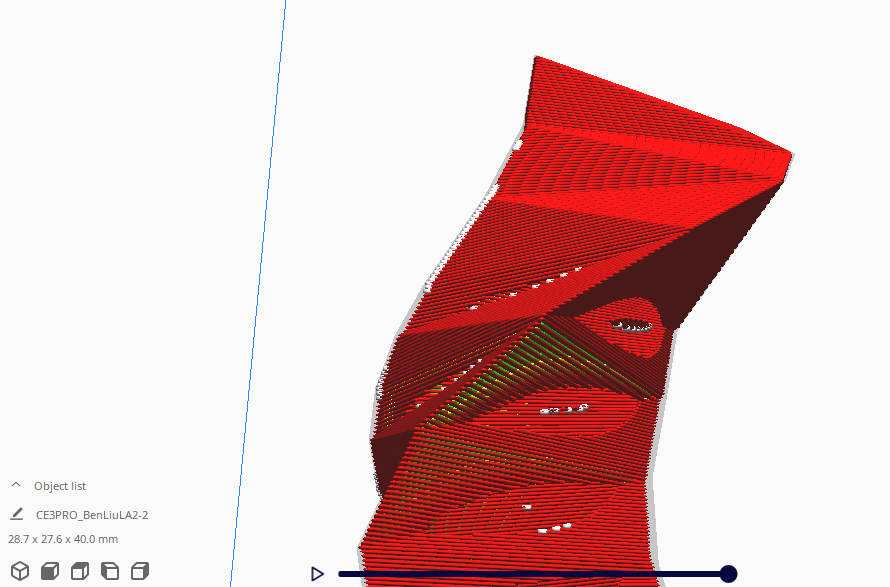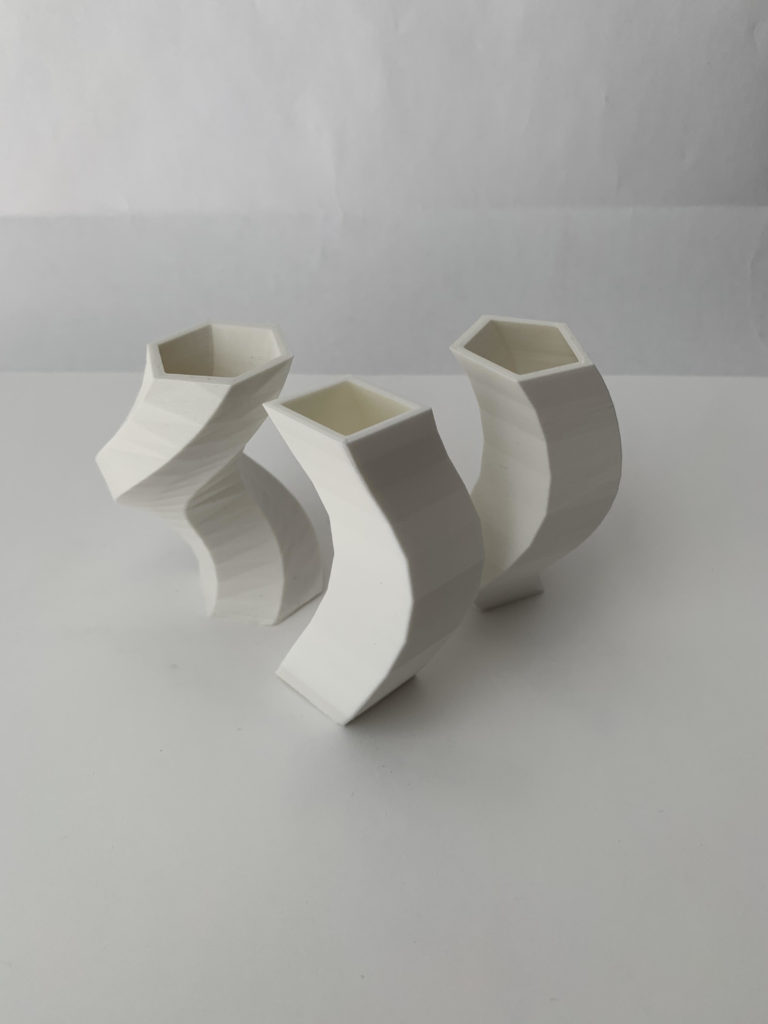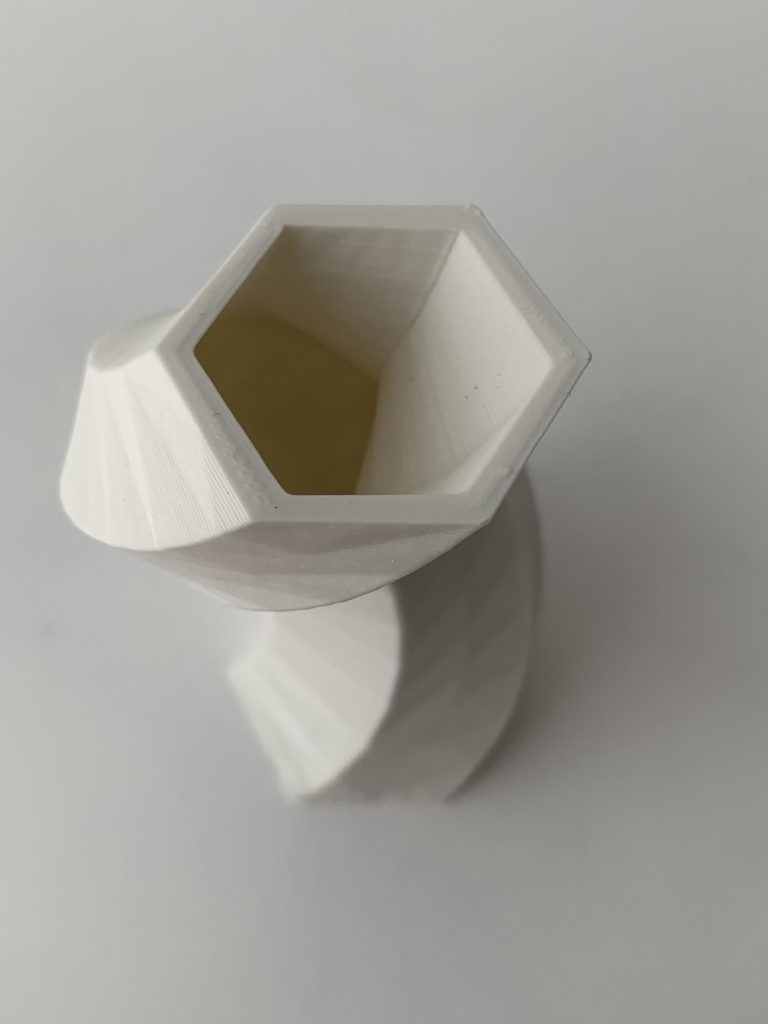Design Process
My designs are based around the polygon shell generator from last Tuesday’s lecture. The main theme that I stuck to was revolving polygons of different sizes, shapes, and orientations around the origin in a radial pattern.

My original idea was to create this sort of tower of polygons, but to change the number of sides per layer. Unfortunately, this ran into issues with both the Pufferfish shell curve function and with slicing the designs in Cura; the curves and surfaces generated by this kind of design seem to be hard for these tools to handle.



Prints
The designs I ended up printing were a little simpler, sticking to one polygon per design but altering the orientation at each level. Each design was then printed with an open top and 1.5mm wall thickness.





Parametric Design Process
I find that the biggest difference between the traditional design process and the parametric design process is iteration. If, for example, you were painting a design on canvas, you could think up a design and have a concrete example of what that design is, but you wouldn’t have the same level of ability to tweak smaller aspects of the design to see if it looks better. An algorithmic approach allows you to have a high-level design planned out with the ability to change details in a way that lets you see the overall result. On the other hand, I can see how this kind of approach could stifle the creative process by allowing less iterative variation, or at least making that variation more difficult to create in a way that translates meaningfully to the final product.
Creative Process
My creative intent with this assignment was to use the basic tools of shape and shell generation to create interesting designs. I honestly don’t think that I’m that creative, so a lot of what I consider an interesting creation is something that takes an “easy”, simple concept and makes it unique or aesthetically pleasing. This does mean that, for the most part, I just experimented with parameters and stuck with what I liked, but I still feel some sense of “authorship” over this design.
Overall, I think that parametric designs are not that different from “traditional” designs. I’m no artist, but it seems to me that every art piece is based on some sort of framework or concept that could be described as an “algorithm”. Even if that “algorithm” isn’t something concrete or something that can be represented through numbers or equations, its still a pattern of design that the artist follows.
Code
https://handandmachine.org/classes/computational_fabrication/wp-content/uploads/2022/02/BenLiuLA2.gh
I totally agree that lots of artistic processes could be described algorithmically. The pattern created on the sides of your forms by the twisting of the shape is really lovely.
Hey Ben,
I like how you describe your creative intent here, and I can see the manifestation of that perspective in your work. The simplicity of the designs is part of what makes them turn out so nice-looking. I know Amy mentioned it in class, but the gradient look on the sides of the vessels really does look so cool. Nice work!
Jamini
Hey Ben,
I saw your designs in person during class, and I think you managed to make designs that look great individually, but look even better when you assemble them together. It really looks like a “family” of vessels.
In regards to your reflection, I do not consider myself to be creative, at least in the visual design realm. However, I think that parametric design allows us to translate a developer’s creativity when it comes to coding into visual designs.